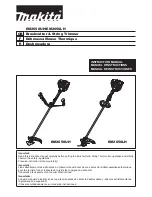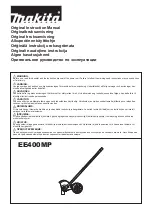
28
ML3000
User Guide
STEREO INPUT and EQ
Two dual input stereo channels are provided to the
right of the master section on the standard models.
A further four are provided to the right of this on the
optional ‘B’ version consoles. These extra four
stereos replace the standard model mono channels.
GAIN
Adjusts the input sensitivity to match the
connected line level source to the internal 0dBu
operating level of the channel. Provides a variable
24dB range from –6dB attenuation to +18dB gain.
Inputs A and B have independent gain controls so
that you can switch between sources without having
to re-adjust the gain, or mix them together in the
required balance. The gain should be set so that
the channel meter averages ‘0’ with loudest
moments lighting ‘+6’. Reduce gain if the red peak
meter lights.
A (B) ON
Turns the input source on or off. Source
A and B are mixed together when A ON and B ON
are both pressed. No source is selected if both
switches are off.
MONO
Press this switch to sum the left and right
signals together as a mono source.
EQUALISER
The stereo channel equaliser
provides adjustment of 4 independent frequency
bands. Each has a cut /boost control.
HF
The high frequency band has a shelving
response that cuts or boosts the higher (treble)
frequencies by up to 15dB. The shelf turning point
is 12kHz.
HM
The higher mid band has a bell shaped
peak/dip response that cuts or boosts by up to
15dB. The centre frequency is 2.5kHz. The bell
has a Q (width) of 1.8.
LM
The lower mid band is similar to the high mid
but has a lower centre frequency at 250Hz.
LF
The low frequency band has a shelving
response that cuts or boosts the lower (bass)
frequencies by up to 15dB. The shelf turning point
is 60Hz.
EQ IN
. Switches the equaliser in or out.
EQ IN
3
10
18
-3
GAIN
-6
3
10
18
-3
GAIN
-6
ON
ST3
ON
ST4
10k
1kHz
100
30k
10
250Hz
2.5kHz
STEREO EQ
-15
-20
-10
-5
0dB
+5
+10
+15
+20
















































